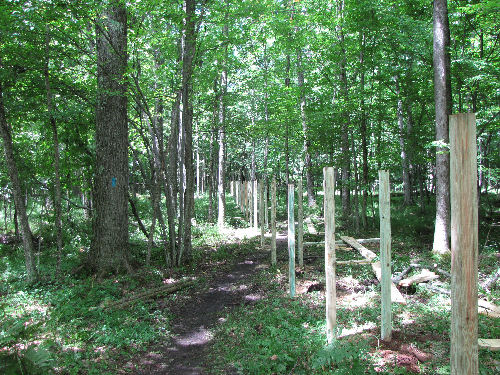Today was my second and last day volunteering for the Karner Blue Butterfly count. I worked with Erin again, and that was fun because we had learned that we work well together. We checked three sites today, but didn't see any of the butterflies. That may only mean that they haven't emerged yet in those plots.
It's still blazing hot here. We were glad enough that it didn't take all day to finish. Actual temps were over 90, with the heat index over 100.
I thought I'd show you what the Karner Blues like in terms of habitat. The key component is the presence of Wild Lupine. The first picture shows one of the butterflies on those leaves. They lay their eggs on the lupine, and the larvae eat the leaves.

They also have favorite flowers for nectar to feed on when they are adults. This was new information to me. First is Horsemint,
Monarda Punctata. I think it looks odd- like the flowers aren't flowers but pale leaves.

Their other favorite is more common, just wild Yarrow,
Achillea millefolium.

All of these plants grow primarily out in the open. The most typical kind of site we surveyed was an old glacial kettle hole. You can tell in the lowest area there is a little more moisture because different kinds of plants grow there, even though it's not a lake any more. Prairie plants will grow in these, yes even in Michigan.

The other ecosystem the Karner Blues like is savannah. That is typically open grassy areas with an overstory of scattered trees so that sun can still reach the ground. This is a typical Midwest oak savannah. Most of the ones in Michigan have disappeared, but the Forest Service has been doing some controlled burns to open them up again. This little space looks like it hasn't needed burning. Again, the important thing is that the plants the butterflies like can grow.

I did see some other interesting things, and got pix of some of them. They may show up here over the coming days if I need something good to use.





































